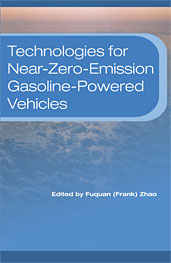Technical Paper
Characteristics of Transient NOx Emissions of HEV under Real Road Driving
2020-04-14
2020-01-0380
To meet the request of China National 6b emission regulations which will be officially implemented in China, firstly including the RDE emission test limits, the transient emissions on real road condition are paid more attention. A non-plug-in hybrid light-duty gasoline vehicles (HEV) sold in the Chinese market was selected to study real road emissions employed fast response NOx analyzer from Cambustion Ltd. with a sampling frequency of 100Hz, which can measure the missing NO peaks by standard RDE gas analyzer now. Emissions from PEMS were also recorded and compared with the results from fast response NOx analyzer. The concentration of NOx emissions before and after the Three Way Catalyst (TWC) of the hybrid vehicle were also sampled and analyzed, and the working efficiency of the TWC in real road driving process was investigated.

